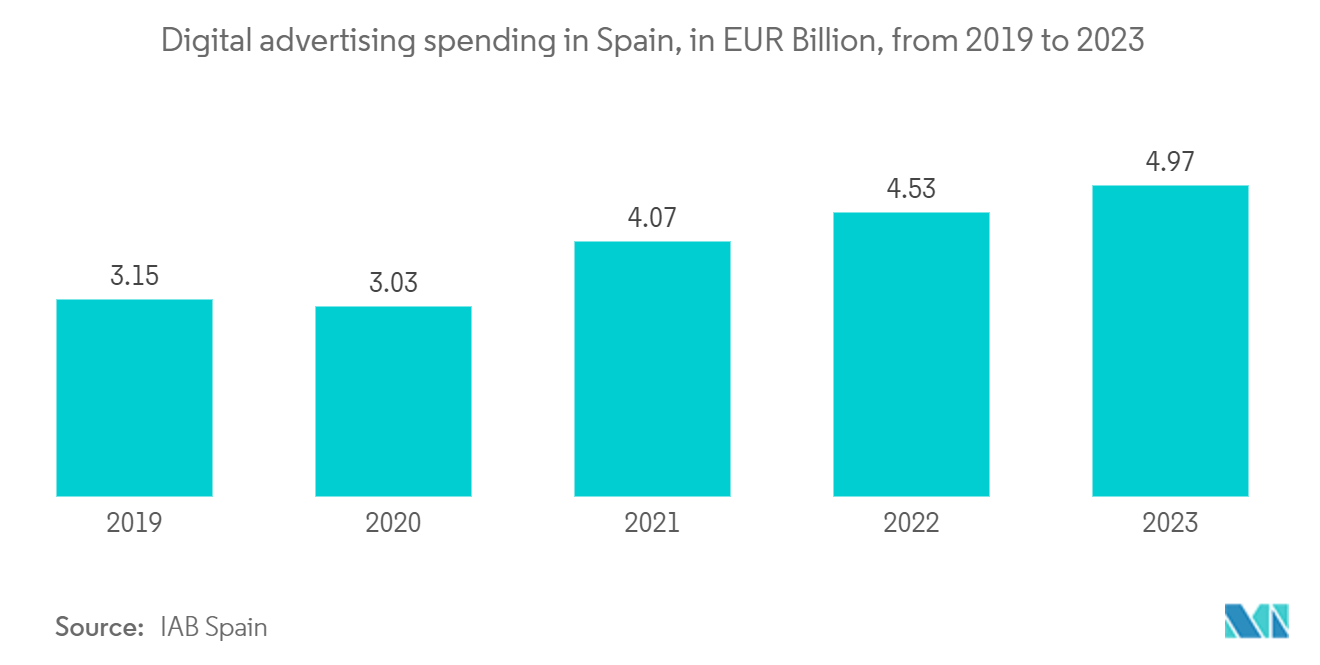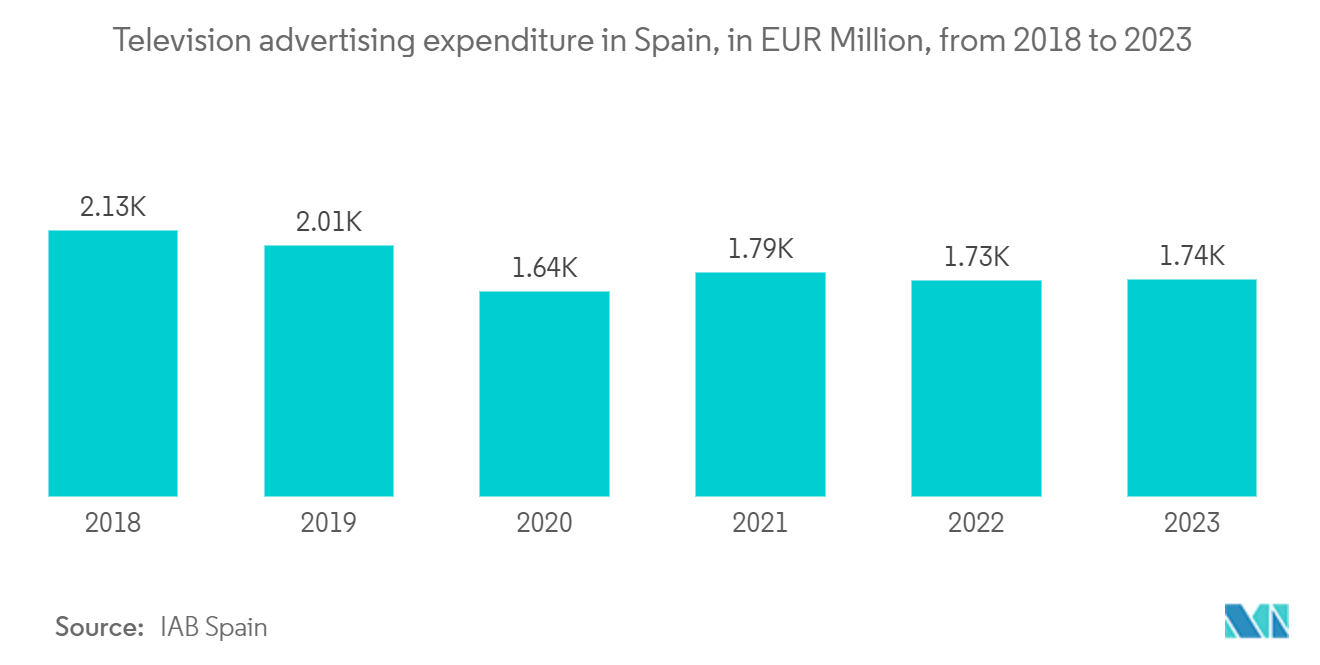Market Trends of Spain OOH And DOOH Industry
Growing Demand of Digital OOH (LED Screens) in Spain
- The Digital Out-of-Home (DOOH) advertising market, particularly LED screens, is experiencing significant growth in Spain. This trend reflects the broader shift toward digital advertising and is influenced by specific factors unique to Spain. Several drivers contribute to this increasing demand, including technological advancements, urbanization, consumer behavior shifts, and the strategic advantages of digital formats.
- Further, in Sapin, there has been a growing demand for Programmatic advertising in the DOOH market. As per the report by IAB Spain, digital advertising spending in Spain is continuously growing. For instance, the spending reached EUR 4.97 billion in 2023, which was EUR 3.19 billion in 2019. Digital advertising enables automated, real-time buying and selling of ad spaces, making campaigns more efficient and targeted. Advertisers in the country have started to deliver tailored messages to specific audiences based on data analytics, which has improved the engagement rates and return on investment.
- Spain's high urbanization rate is a significant driver of DOOH demand. Major cities like Madrid, Barcelona, and Valencia have dense populations that are constantly moving, making urban areas prime locations for digital billboards. These cities' extensive public transportation networks also offer numerous opportunities for placing LED screens reaching commuters on buses, trains, and metro stations. Hence, many advertising agencies have shifted toward the adoption of LED-based advertising.
- With the growing demand, there has been a growing investment in the country to launch such LED screens. For instance, in January 2024, Nexnovo, a leading manufacturer of transparent LED screens, unveiled its plan to exhibit its advanced technologies at the Barcelona Expo Center. The showcase will feature advancements such as glass LEDs boasting finer resolutions, NF film screens, FantaSign's smart mini digital glass LED signage, and innovative curved glass LED displays. These offerings are poised to revolutionize advertising for retail stores, window displays, events, and exhibitions.

Rising Demand of OOH and DOOH in Retail and Consumer Goods
- Spain's retail and consumer sector is pivoting toward Out-of-Home and Digital Out-of-Home advertising to stand out in a competitive market. This move is driven by technological advancements, evolving consumer behaviors, urbanization, and the strategic advantages inherent in the advertising industry. The evolution of display technology significantly boosted the effectiveness of both OOH and DOOH advertising. High-definition LED screens and digital billboards offer better brightness and visual appeal, making advertisements more eye-catching.
- Retailers in Spain are taking various initiatives to increase their sales with the help of various advertising strategies. For instance, in March 2024, The Spanish retail chain Tea Shop installed screens in approximately 100 of its stores, primarily in Spain. This initiative enhances consumer engagement by offering dynamic and detailed product information. Additionally, it serves as a more impactful platform for promoting special events and offers. Such growing initiatives drive the overall OOH and DOOH market in Spain.
- The integration of data analytics with DOOH advertising allows retailers to deliver targeted messages based on audience demographics and behavior. Advanced data collection tools can track the effectiveness of ads and provide insights into consumer interactions, enabling retailers to optimize their campaigns for better results. This data-driven approach increases the precision and ROI of advertising efforts. Due to this, retail companies are now shifting toward adopting data-driven targeting strategies through OOH and DOOH products.
- There has been a shift in the way companies advertise. According to the report released by IAB Spain, Spain is shifting toward digital advertising. In 2018, the television advertising expenditure was EUR 2,127 million, which was reduced to EUR 1,735 million in 2023. This reduced television advertising expenditure shows the shift toward the adoption of out-of-home advertising strategies.



